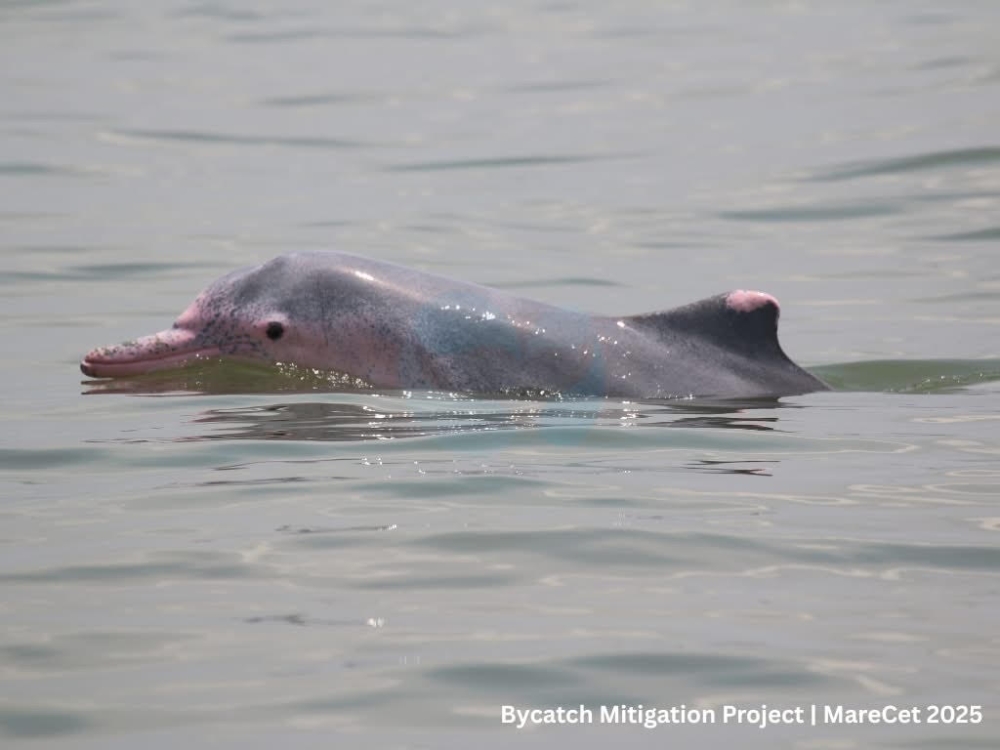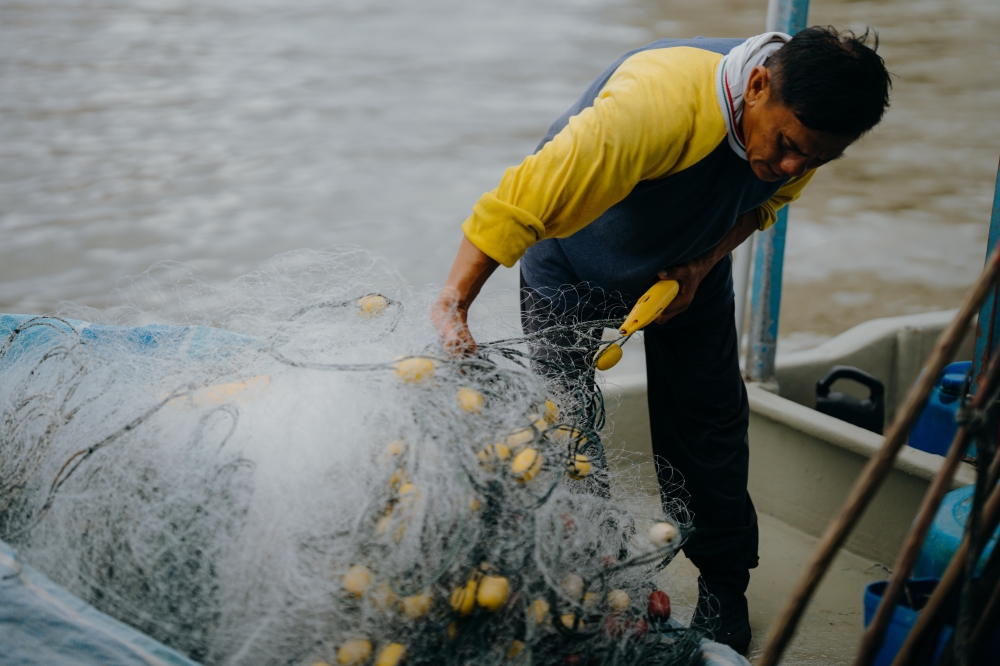Whales, dolphins and dugongs live in Malaysian waters — here’s why they need protection
KUALA LUMPUR, July 9 — Do whales, dolphins and dugongs really exist in Malaysian waters?
Yes, they do — and they’re not just passing through. They live here, said marine biologist and scientific officer at MareCet Research Organisation, Vivian Kuit.
Partially debunking the belief that such marine mammals only exist abroad or in cold climates, Kuit said the species found in Malaysia are not migratory strays but permanent residents.
“In fact, there are 27 species of marine mammals recorded in Malaysian waters. Among them are Indo-Pacific humpback dolphins, Indo-Pacific finless porpoises, spinner dolphins, dugongs, long-beaked common dolphins, Irrawaddy dolphins, Bryde’s whales and Indo-Pacific bottlenose dolphins,” she told Malay Mail in a recent interview.
“The coastal waters in different states have different species. In Perak, for example, we’ve recorded four species, excluding Bryde’s whales and dugongs.
“Dugongs, for instance, only eat seagrass, so they rely on habitats where there are large patches of it.
“Whales are usually spotted more offshore — like in Langkawi, Bryde’s whales are quite common. But if you ask any fisherman, they’ll say ‘I just saw dolphins last week’,” she said.
According to Kuit, for those who spend a lot of time at sea, seeing dolphins and other marine mammals is a common occurrence.
However, awareness of their presence in local waters remains low — and this lack of awareness contributes to injuries and deaths among the species, particularly from fishing activities.

Why dolphins matter
The most commonly seen marine mammals in Malaysian waters are dolphins — and they are among the most threatened by human activity.
Why does it matter whether they are dead or alive?
Aside from being charismatic creatures, dolphins are top predators, said Kuit. That means they play a crucial role in regulating the marine food web.
“They regulate fish populations. For example, dolphins usually catch weaker fish that can’t swim as fast, which helps maintain stronger genetics in the fish population and improves the balance of the ecosystem,” she said.
“Beyond that, dolphins are indicator species. If you’ve been seeing dolphins in an area regularly and suddenly you don’t anymore, it can signal environmental problems such as pollution or overfishing.
“If I told you a small plankton is missing, you wouldn’t notice. But if villagers who’ve seen dolphins since childhood suddenly don’t see them anymore, that’s usually a clear sign something’s wrong in the ecosystem,” she said.
When dolphins are caught in fishing nets
Kuit said that fishermen sometimes catch more than just fish in their nets — especially when entanglement, or bycatch, occurs.
Bycatch is one of the deadliest threats to dolphins in Malaysia and globally.
It happens when marine mammals and fishing activity overlap in the same waters.
“In Kuala Sepetang, Perak, for example, fishermen use drift nets — a kind of net that drifts with the tide.
“That area is also frequented by Indo-Pacific humpback dolphins. When they overlap with these nets, that’s when bycatch is most likely to happen,” she explained.
When MareCet started its studies in 2013, there was very little data on marine mammals in Malaysia. But it quickly became clear that bycatch was a major threat, prompting the organisation to apply for and receive a grant from Yayasan Hasanah in 2023.
“With that, we launched our bycatch mitigation project — equipping fishermen with acoustic pingers for their nets to reduce bycatch and depredation,” she said.
Depredation refers to dolphins taking fish from the net to eat.
“Sometimes, they don’t realise there’s a net in front of them, and when they go after the fish, they get entangled.
“Once entangled, they may panic and roll, which worsens the entanglement. Their tails might get caught, and since marine mammals need to surface to breathe, they can drown if they can’t reach the surface in time,” Kuit said.
She recalled witnessing a live bycatch incident in which a fisherman tried to release a dolphin trapped in his net.
“It’s actually very difficult to release an animal when it’s panicking. The dolphin was bleeding from the net. That experience was what motivated us to work with fishermen so they can fish without harming dolphins,” she said.
Fortunately, Kuit said most local fishermen don’t want entanglements either.
“In some countries, fishermen view dolphins as competition. But here in Perak, for instance, some believe that if a dolphin gets caught in your net, it’s bad luck and the net won’t catch fish anymore.
“In general, they’re happy to see dolphins. To them, if the dolphins are happy, they’re happy too,” she said.

Fishing sustainably with acoustic pingers
The solution MareCet promotes is the use of acoustic pingers — small devices that emit sounds to warn dolphins away from fishing nets.
Shaped like bananas, the devices are also called “banana pingers”.
“These devices emit a ping in the water that dolphins can hear, but other animals can’t. Dolphins have a very high hearing frequency — while humans hear up to 20,000 kilohertz, dolphins can hear up to 50,000 kilohertz,” she explained.
“With the Yayasan Hasanah grant, we were able to purchase pingers and distribute them to fishers who joined our project.
“These pingers are available overseas, but not locally. They cost about RM400 each. As long as they don’t get flooded inside, they last a long time, and they run on regular batteries,” she said.

What’s next for MareCet?
Kuit said the pilot bycatch mitigation project began in Perak, but MareCet now hopes to expand it to other areas, including Selangor.
“Bycatch is the biggest threat to marine mammals globally. The three species most commonly found in Perak — the Indo-Pacific humpback dolphins, Irrawaddy dolphins and Indo-Pacific finless porpoises — are also among the world’s top 10 most bycaught marine mammals.
“So we hope to expand this to any state where fishers need these pingers,” she said.
Kuit’s interest in dolphins and marine conservation began as part of her PhD in marine biology, which focused on the ecology of dolphins in Perak.
“I’m from Sandakan, Sabah. I only snorkelled for the first time when I was 17. The moment I went underwater, I was amazed — it was so different, so vibrant. That’s when I got hooked on studying marine life,” she said.
MareCet hopes that acoustic pingers will eventually become more accessible in Malaysia.
“Nobody else is doing bycatch mitigation work here, unlike in many countries abroad. That’s why with Yayasan Hasanah’s funding, we’re collecting data and presenting it to the Department of Fisheries Malaysia,” she added.
According to MareCet’s data, each fisher typically experiences one bycatch incident every two to three years.
“Since the project started, fishers have reported no bycatch, and their fish catch has increased by 30 per cent.
“Depredation by dolphins has also reduced by 70 per cent.
“On average, for every 24 fishers, you’d get at least one bycatch case every two to three years — which means about eight incidents a year,” Kuit said.
Get Insurance Now



